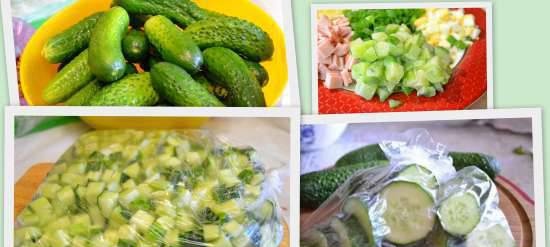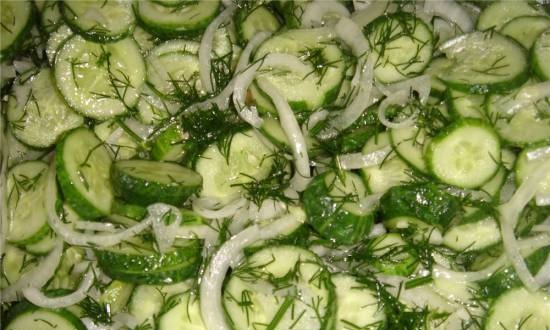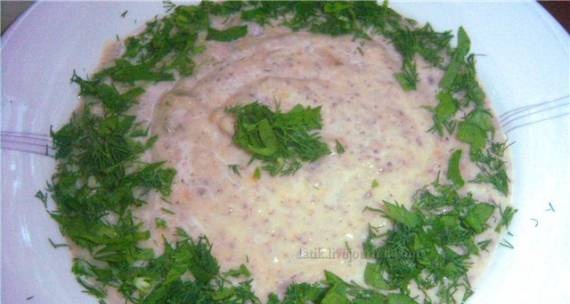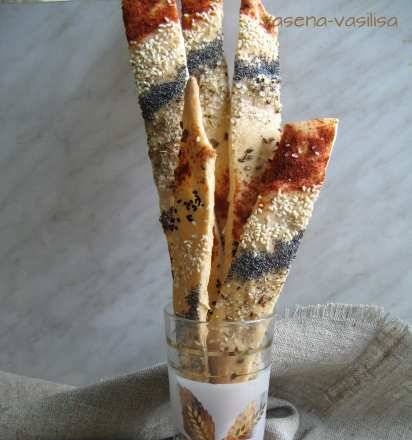|
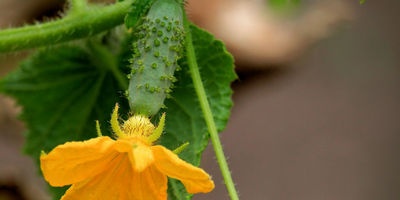 Cucumbers should be grown, as a rule, with organic fertilizer in the first crop rotation field, and in a grass crop rotation - but with a layer of perennial grasses. The best predecessors are perennial grasses, cabbage, legumes, root vegetables and potatoes. Cucumbers should be grown, as a rule, with organic fertilizer in the first crop rotation field, and in a grass crop rotation - but with a layer of perennial grasses. The best predecessors are perennial grasses, cabbage, legumes, root vegetables and potatoes.
For cucumbers, areas with low relief should not be used, where crops will suffer from lower temperatures and, in addition, be at risk of late spring and early autumn frosts. Areas with a close standing groundwater are also not used.
Cucumbers absorb organic fertilizers especially well, so at least 60-80 tons of manure per hectare must be applied, along with all other local organic fertilizers: municipal waste, peat, etc. City waste is cleared of impurities — glass, cans, bones — and applied in rotted form in the amount of 70-100 tons per hectare. Peat is used in the form of compost with manure, garbage, phosphate rock and is applied at 80 tons per hectare, and if the compost is made of peat and feces, then it is applied 40-60 tons per hectare.
If the cucumbers follow cabbage in the crop rotation, then organic fertilizers are additionally applied under it in the doses indicated in the section "Cabbage and cauliflower". With a lack of organic fertilizers, the doses can be reduced by 2 times compared to those indicated, subject to the introduction of mineral fertilizers: 5 centners of superphosphate, 2.25 centners of potassium salt, 5 centners of wood ash and 3 centners of ammonium sulphate per 1 hectare.
Organic fertilizers are best applied in the spring for early spring plowing and embedded to a depth of 15-18 cm on light soils and 12-15 cm on heavy soils.
Peat-fecal compost is applied to the fields only in spring, since nutrients can be washed out of it during the autumn application.
It is better to apply manure fertilizer in the northern regions in the spring.
Mineral fertilizers are applied in the spring during the first tillage for plowing or cultivation, and for their better use, 2/3 of the fertilizer dose is embedded under a plow or cultivator, and 1/3 under a harrow.
Cucumbers are demanding on heat, and therefore the main sowing must be carried out in a time frame that guarantees the safety of seedlings from frost.
The area for sowing cucumbers should have an elevated relief, protected from the winds, with a southern slope. The soil should be: light, fertile, loose, easily permeable to water and air, well warmed up, without close water standing. To insure the early sowing of cucumbers from frost, 5-7 days after the first sowing, it is necessary to carry out the second.
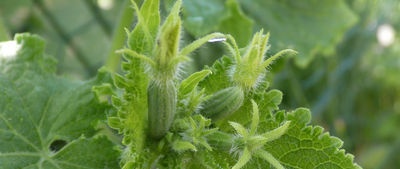 To obtain the earliest yields, planting cucumbers with seedlings grown in turf, in manure-earthen, clay pots and paper cups should be used. Seedlings grown in dung-earth, clay pots and paper cups are planted in open ground when 3-4 leaves grow. Growing such seedlings in greenhouses requires no more than 25-30 days. Seedlings obtained in turf-ka are planted in the ground, when 2-3 leaves grow, it takes 20-25 days to grow. Cultivation is also used in boxes. This seedling is planted in the ground necessarily with a clod of earth when the cotyledons open. Preparing such seedlings in greenhouses takes up to 10 days. To obtain the earliest yields, planting cucumbers with seedlings grown in turf, in manure-earthen, clay pots and paper cups should be used. Seedlings grown in dung-earth, clay pots and paper cups are planted in open ground when 3-4 leaves grow. Growing such seedlings in greenhouses requires no more than 25-30 days. Seedlings obtained in turf-ka are planted in the ground, when 2-3 leaves grow, it takes 20-25 days to grow. Cultivation is also used in boxes. This seedling is planted in the ground necessarily with a clod of earth when the cotyledons open. Preparing such seedlings in greenhouses takes up to 10 days.
More adult seedlings of cucumbers in the open field are difficult to take root due to a violation of the root system.
Planting of seedlings is carried out after the danger of frost has passed and it is better on cloudy days, and in hot sunny weather - in the evening. The distance between seedlings in rows is 10 cm. Seedlings planted with a clod of earth or with a pot are planted up to the cotyledons of the plant.The soil around the seedling is tightly compressed, watered abundantly, and the watered places are sprinkled with dry earth.
Sowing cucumbers with seeds is usually done on a flat surface. When sowing, vegetable seeders are used. Seeds are planted to a depth of 2-2.5 cm, and on heavy soils, shallower. To accelerate the emergence of seedlings, when sowing with a seeder, the seeds should be soaked to the stage of swelling, then ventilated in the shade to a state of good flowability, after which they are well sown by the seeder.
Sowing by hand is best done with soaked or sprouted seeds with gravy in the grooves of water (in dry weather), with filling the grooves with humus with a layer of 2 cm or with ventilated peat with a layer of 2-3 cm. Backfilling with humus or peat prevents crust formation, increases the yield and accelerates start picking cucumbers. When applying humus for cucumbers, you cannot take it from those greenhouses where the cucumbers were affected by diseases or spider mites, since the latter can be transferred to open ground. The distance between the rows for Muromsky cucumbers should be 70 cm, for Nerosyms and Vyaznikovsky - 80 cm. The seeding rate per 1 hectare is 8 kg. Sowing on ridges and beds is carried out only on heavy, damp soils. When sowing cucumbers on the ridges, the distance between the ridges is 70 cm. Sowing can be done manually and with manual seeders.
Sowing cucumbers on fallow beds gives earlier fruit ripening. They are arranged as follows: first, a layer of fresh horse manure is laid — 40—45 cm wide and 20—25 cm high. Then it is covered with a 15—20 cm layer of earth. The manure warms the soil and simultaneously serves as a fertilizer. For the device of steam beds, you can use a single plow. The plow passes 2 times, forming a furrow 40 cm wide and about 20 cm deep. The furrow is filled with manure. The plow, in reverse, pours the soil onto the manure from both sides of the furrow and forms a steam ridge.
To protect cucumbers from the winds, pea crops should be applied every 4-5 rows. High-stemmed pea varieties are taken; the stems are attached to the stamens and form trellises. Sowing peas can be replaced with a hedge made of reeds, straw, or a wicker fence 2.5-3 m high around the site. When seedlings appear, and on heavy soils, with the formation of a crust before emergence, the first loosening is carried out, which is repeated as the crust forms and continues as long as the development of plants allows. In total, it is necessary to give 4 - 5 loosening and they are done by horse or tractor cultivators.
As soon as mass shoots of cucumbers appear, the first shelf is given manually, it is repeated as needed, but at least 3-4 times a summer.
When two true leaves appear in plants, thinning is done in rows. A distance of 4-5 cm is left between the plants for the Murom; 6-8 cm for the Vyaznikovskys and 8-10 cm for the Unbearable. The sowing is finally thinned out when a true third leaf appears. All weak plants are removed and only strong plants remain. When the third leaf appears, the cucumbers are spud up to the cotyledons, followed by a mandrel by hand.
In order to combat frost, smoke screens are used, for which it is necessary to have heaps of manure, garbage, old straw and other substances prepared near the site, which, when burned, would give a lot of smoke. Smoke should be started when the air temperature drops to D-1, + 2 °, and continue until sunrise.
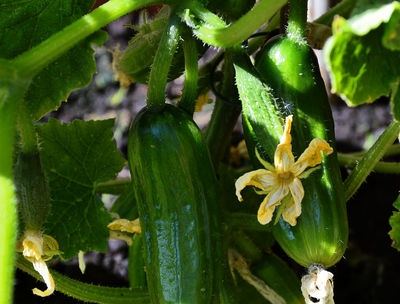 On the eve of the expected frost, it is recommended to water the area well with water, this weakens the effect of frost on the plants. It is necessary to have matting, old mats, unusable hay, etc. near the site. materials that could cover the rows on the eve of freezing. On the eve of the expected frost, it is recommended to water the area well with water, this weakens the effect of frost on the plants. It is necessary to have matting, old mats, unusable hay, etc. near the site. materials that could cover the rows on the eve of freezing.
Crops of cucumbers are mulched in rows. Mulching accelerates the ripening and increases the yield of cucumbers. For mulching before sowing, mulch paper is used. When mulching with humus, the covering layer is 2-3 cm, and with peat - 3-4 cm. Peat is taken well-ventilated, lying in a heap for at least a year and not sour.The soil must be warm and moist before mulching. In dry and cold soils, mulching gives negative results.
It is necessary, as necessary, to timely combat diseases and pests of cucumbers.
For good development, cucumbers require a lot of moisture: with a lack of moisture, the yield decreases. In hot, dry weather, cucumbers are watered with clean water, preventing the plants from wilting, preferably in the evening, soaking the soil to a depth of 10-12 cm near the plants. At the time of sowing, if the weather is hot and dry, the first watering is carried out after sowing and always with a quiet stream to avoid erosion of irrigation furrows. Further watering is given depending on the drying out of the soil. After each watering, the soil is loosened.
To increase the number of ovaries, it is recommended to place bee hives around the site during flowering.
To adjust poorly developing plants, fertilizing is given — fertilizing irrigation from a solution of organic or mineral fertilizers. When watering, a well-mixed and fermented mullein solution is diluted with water 3-4 times, and the same solution of bird droppings - 10 times. It is good to add a half dose of potash fertilizers to poultry manure, and a full dose of superphosphate to slurry. These doses are indicated below, where it is said about fertilizing with mineral fertilizers. The slurry is diluted with water 3-4 times. Fertilizing watering of sowing is carried out after weeding. In dry weather, the soil is pre-watered with clean water. Top dressing is best done in cloudy weather or in the evening. The first feeding is given when 3-4 true leaves are formed on the plant. The solution is poured into grooves 4-5 cm deep on both sides of the row, at a distance of 6-8 cm from the plants. One bucket of solution is consumed for 5-6 running meters. meters. To prepare a solution from mineral fertilizers, 14 g of ammonium nitrate or 24 g of ammonium sulfate, 52 g of superphosphate and 16 g of potassium salt are taken for 1 bucket of water. Superphosphate application see page 11.
The second feeding is carried out 15-20 days after the first, while the rows have not yet closed. With the second feeding, one bucket of water is taken: 36 g of ammonium nitrate or 62 g of ammonium sulfate, 35 g of superphosphate and 42 g of potassium salt. During the second top dressing, fertilizers are also applied to the grooves, at a distance of 10-12 cm from the plants and to a depth of 6-8 cm. After the solution has been absorbed by the soil, the grooves are immediately sealed and loosening is performed throughout the entire area.
The picking of cucumbers is done as often as possible — every other day, and in hot summer every day, avoiding the overgrowth and yellowing of the fruit. Frequent harvesting increases the yield. When collecting, it is necessary to remove all sick and hooked fruits. Leaving diseased fruits on the lashes contributes to the disease of healthy ones, depletes the plant and lowers the yield. When collecting, trampling and twisting of the whips should not be allowed. In the last harvest, before frost, it is necessary to remove not only large fruits, but also 3-5-day-old cucumber ovaries, which go into a special salting.
I. Osipov - Agroindication
|
 Cucumbers should be grown, as a rule, with organic fertilizer in the first crop rotation field, and in a grass crop rotation - but with a layer of perennial grasses. The best predecessors are perennial grasses, cabbage, legumes, root vegetables and potatoes.
Cucumbers should be grown, as a rule, with organic fertilizer in the first crop rotation field, and in a grass crop rotation - but with a layer of perennial grasses. The best predecessors are perennial grasses, cabbage, legumes, root vegetables and potatoes. To obtain the earliest yields, planting cucumbers with seedlings grown in turf, in manure-earthen, clay pots and paper cups should be used. Seedlings grown in dung-earth, clay pots and paper cups are planted in open ground when 3-4 leaves grow. Growing such seedlings in greenhouses requires no more than 25-30 days. Seedlings obtained in turf-ka are planted in the ground, when 2-3 leaves grow, it takes 20-25 days to grow. Cultivation is also used in boxes. This seedling is planted in the ground necessarily with a clod of earth when the cotyledons open. Preparing such seedlings in greenhouses takes up to 10 days.
To obtain the earliest yields, planting cucumbers with seedlings grown in turf, in manure-earthen, clay pots and paper cups should be used. Seedlings grown in dung-earth, clay pots and paper cups are planted in open ground when 3-4 leaves grow. Growing such seedlings in greenhouses requires no more than 25-30 days. Seedlings obtained in turf-ka are planted in the ground, when 2-3 leaves grow, it takes 20-25 days to grow. Cultivation is also used in boxes. This seedling is planted in the ground necessarily with a clod of earth when the cotyledons open. Preparing such seedlings in greenhouses takes up to 10 days. On the eve of the expected frost, it is recommended to water the area well with water, this weakens the effect of frost on the plants. It is necessary to have matting, old mats, unusable hay, etc. near the site. materials that could cover the rows on the eve of freezing.
On the eve of the expected frost, it is recommended to water the area well with water, this weakens the effect of frost on the plants. It is necessary to have matting, old mats, unusable hay, etc. near the site. materials that could cover the rows on the eve of freezing.
